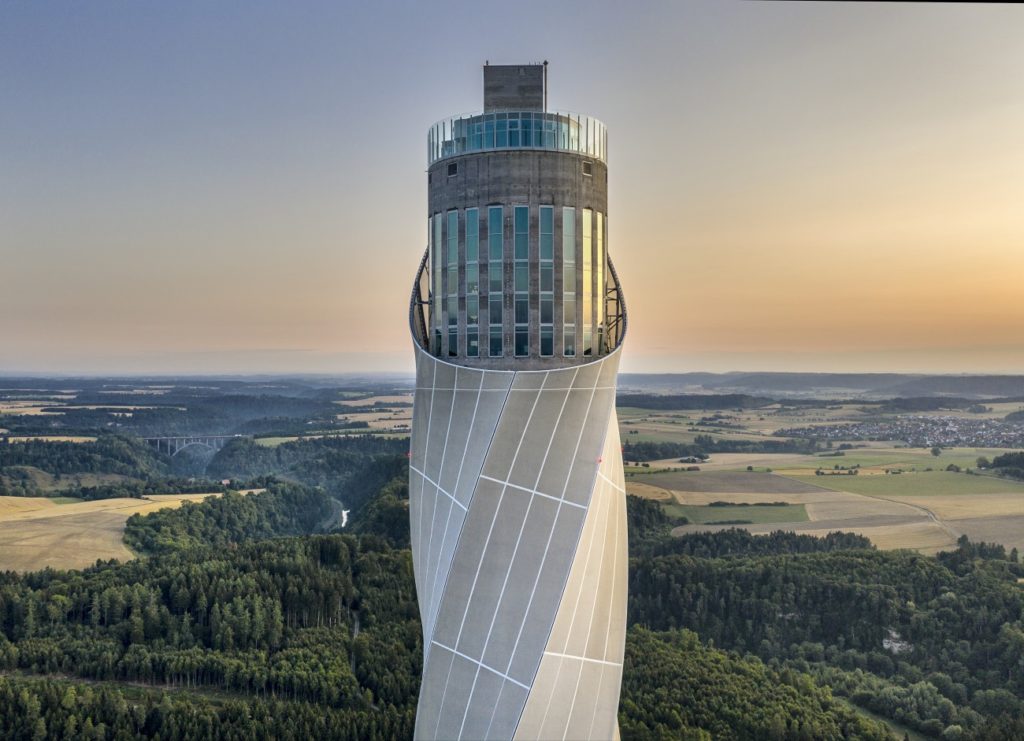
Up to the Future with TK Elevator
When I ask him why we need elevators, David Gerson, Director of Marketing (U.S. and Canada) for TK Elevator, paints an illuminating picture: “think about doing 50-60 stories on a Stairmaster… maybe, if you’re in great shape, you can do it, but it’s going to take 30-45 minutes, and it’s going to kick your butt.”
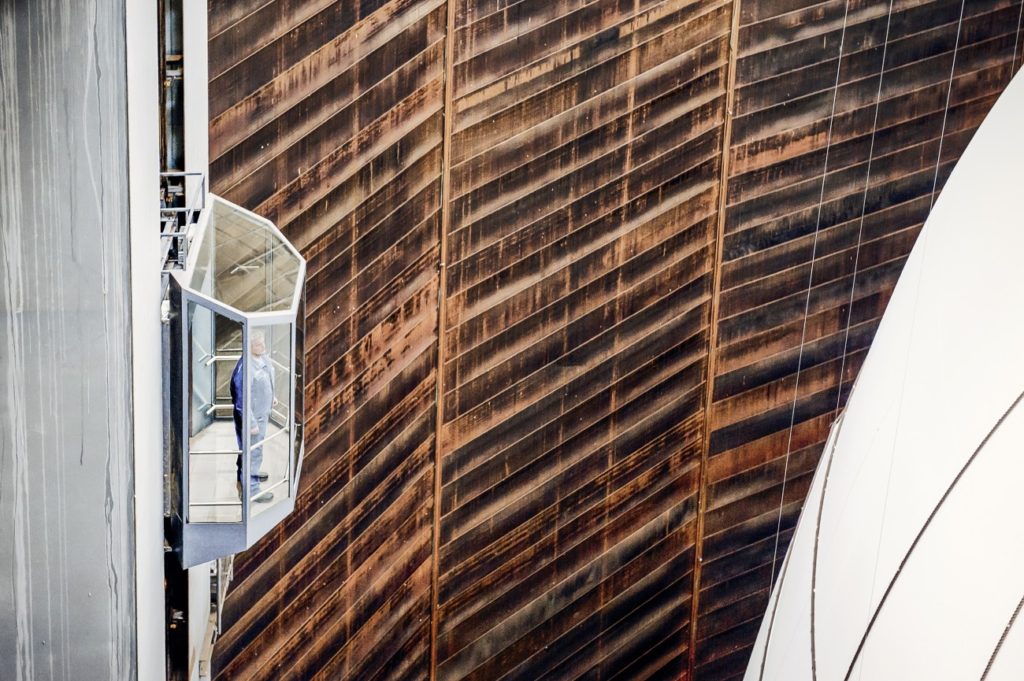
A TK Elevator on a 50+ story building. Would you like to traverse this expanse on foot?
The question was half rhetorical, but Gerson’s point is well taken. Why do we need elevators? The reasons spread out above and beneath us like a cavernous hoistway: because most people can’t walk five stories, let alone 50; because we value our time; because verticality makes urban density possible; in short, because modern life depends on them. If you stop to think about it, you’ll realize that elevators are fundamental to the urban fabric. What percentage of the U.S. population depends upon this mode of transport to live and work? The answer would be difficult to determine with any amount of precison, but in colloquial terms we can say A LOT. Just think of the population of our major cities, and our not so major ones as well.
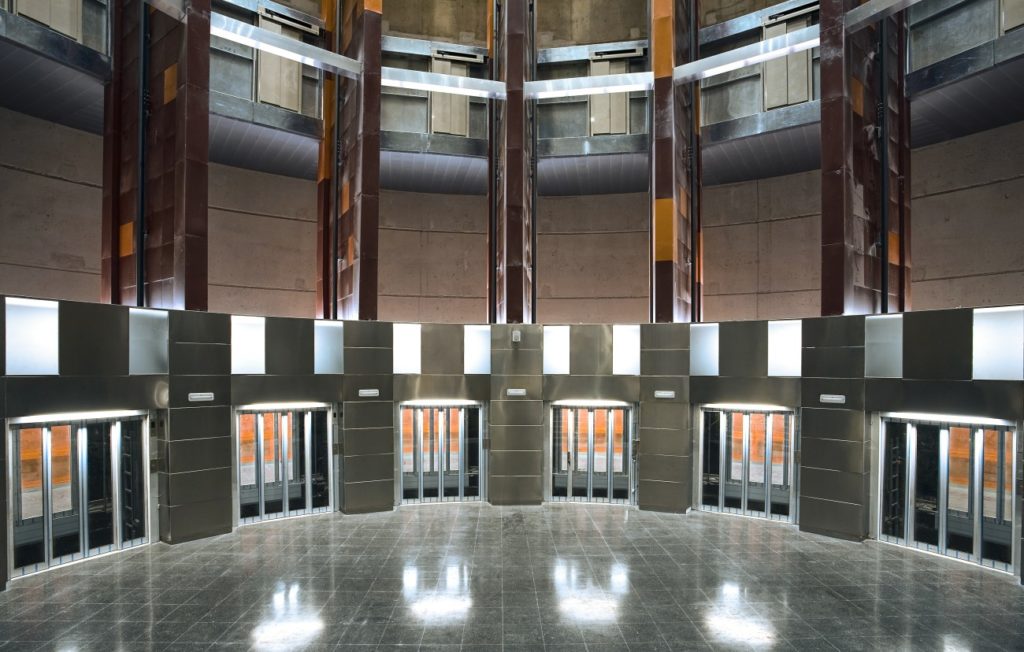
A bank of TK Elevators at Barcelona’s metro station
The Basics of Vertical Transport
As a primer and lead-in, I asked Gerson for a brief review of elevator technology. In what he described to me as “Elevator 101,” he sketched out two types: hydraulic and traction. Hydraulic elevators basically operate as a large pump. A fluid delivery system creates pressure within a jack-like platform that lifts the elevator. Reverse the process and the fluid goes down along with the hydraulic arm, methodically taking the elevator with it. This technology is 70-80 years old, and it’s not only still ubiquitous but also fundamental: “these are old school, strong, functional, highly robust products… any building with a freight elevator, any context of moving really heavy weight, this would be hydraulic.”
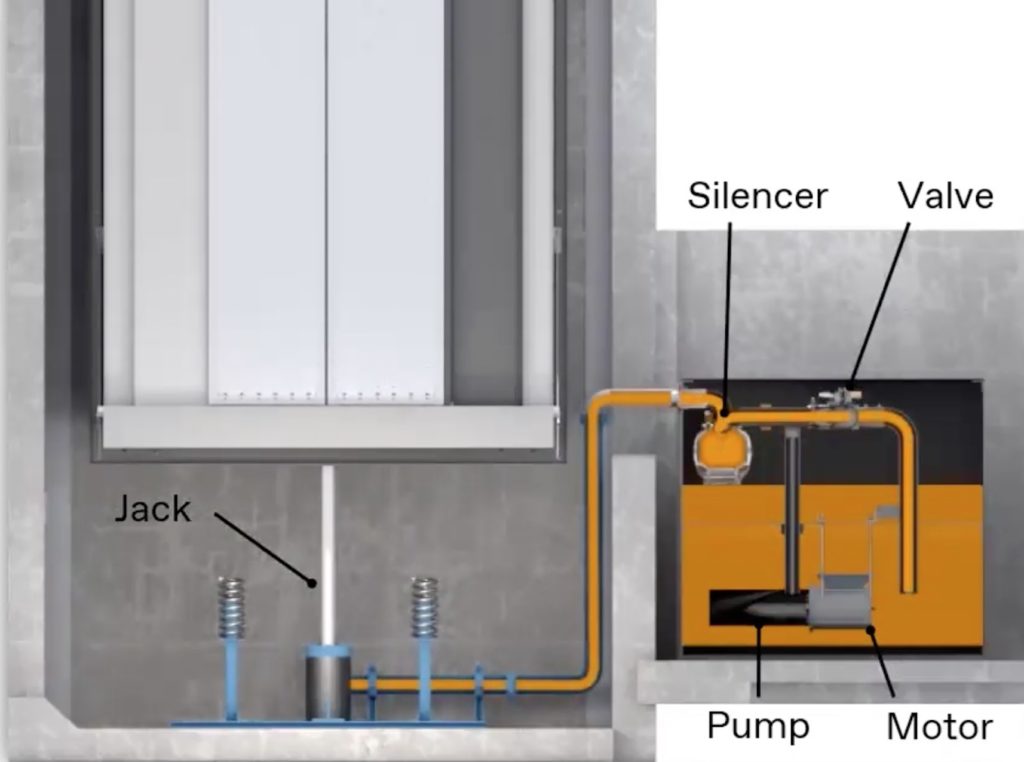
Ultra-simplified versions of hydraulic and traction elevators. The real ones have a few more moving parts.
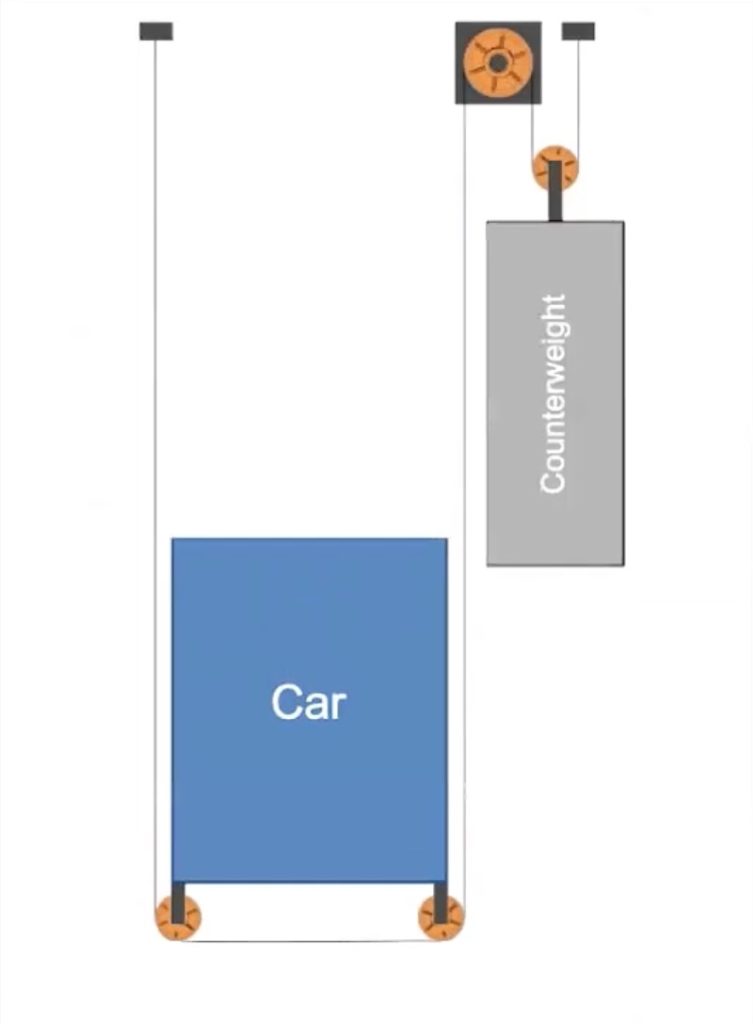
Hydraulic elevators are for moving heavy things over short distances. Traction elevators, by contrast, are made to move lighter things (mostly people, but also robots, as you’ll see) very quickly up tremendous vertical expanses. Most have a cursory familiarity with this type of elevator’s aesthetic and function via Die Hard, but Gerson’s Elevator 101 version of this technology is basically a rope and a pulley. Traction elevators use a counter-weight system with motors to assist the direction of travel of the tremendous steel cables that support the cab. They also utilize a safety/braking system in which gears in the shaft mesh with teeth on the cab, in case anything goes wrong with the cable.
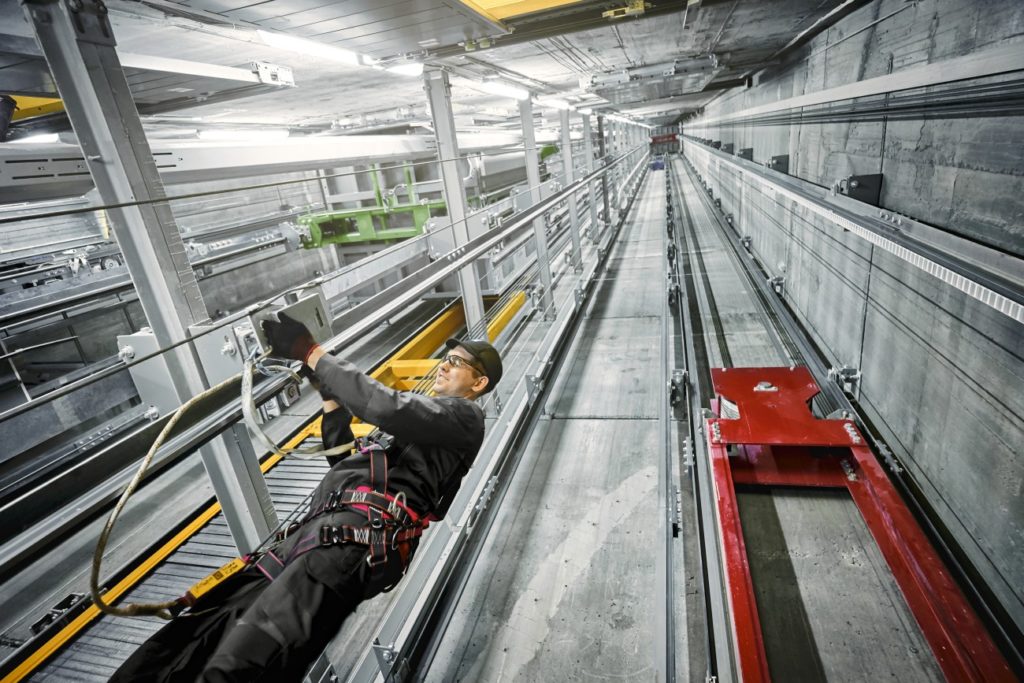
A long way down. This is a traction elevator.
In what Gerson refers to as the “super-skyscraper age,” traction elevators routinely move at 2,000 feet per minute. Let me pause here to put this in context: a really strong hiker can perhaps traverse a 2,000-foot vertical gain in one hour. Here’s another way to think of it: TK’s elevators at One World Trade Center move at about 23 miles per hour. But this isn’t a constant speed. It requires acceleration to achieve it. So a major determinant in an elevator’s efficiency is how infrequently it stops—this truth provides a nifty segue into one of Gerson’s, and TK’s, central objectives: making elevators smarter.
The Age of Intelligent Dispatch
“This isn’t to say they’ve been dumb,” he says “only that we can make them much, much smarter.” Think about how most elevators function: a gaggle of people congregate in the lobby, someone pushes “up,” they all get on, then the elevator methodically stops at each and every floor selected, never traversing the distance needed to achieve top speed, “kind of like driving in a parking lot with very severe speed bumps.” This is profoundly inefficient and exactly why TK’s Intelligent Dispatch is so innovative and so sorely needed. Gerson describes it like this: “I’ve got people in the lobby. I’ve got four people going to the tenth floor. I’m going to group them all in the same elevator, so it achieves top speed, arrives much faster, and everyone gets off.” This not only increases handling capacity by 30% and reduces travel time by 25%, but also alleviates crowding, “because the last thing we want to do as we return to the office is stand shoulder-to-shoulder with a bunch of other people.”
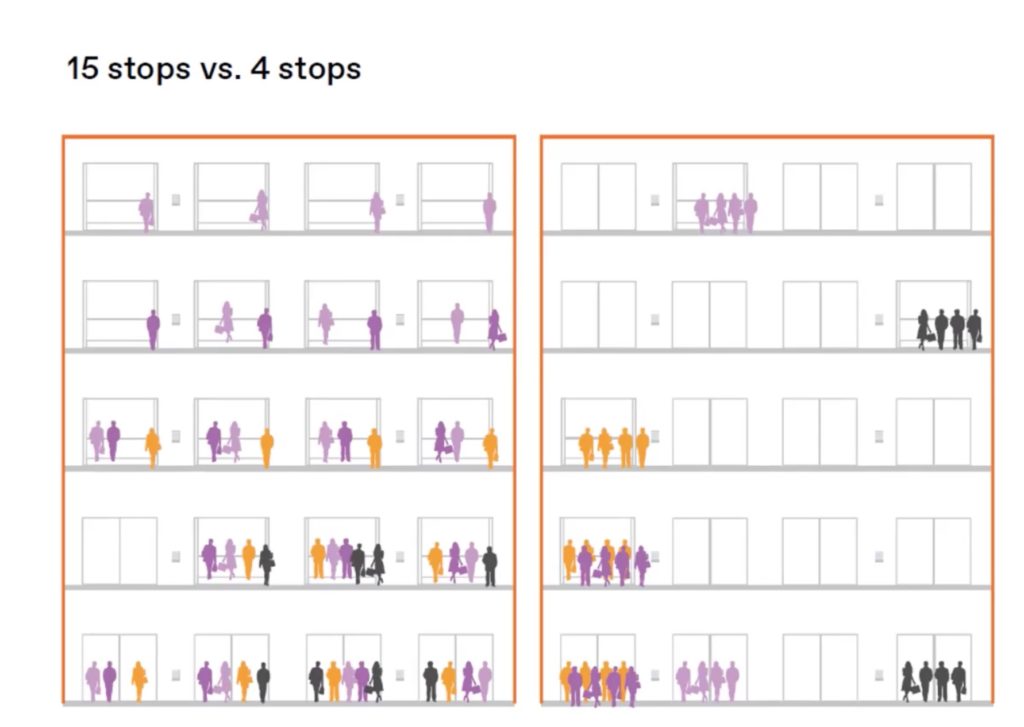
A diagram of Intelligent Dispatch. Same number of people, four trips instead of 15.
The system also enhances security. In most modern buildings, visitors must request access and disclose which floor they’re traveling to. This information is instantly digitalized and delivered to the Intelligent Dispatch interface so the elevator can make split-second (nanosecond, in fact) decisions about how to group the travelers. You’re given a badge—or, in the logical evolution of this technology—a bar code or an app on your phone, for you to scan at an interface that tells you which elevator to go to. Says Gerson, “this is all A.I. technology, so there’s all this data crunching going on behind the scenes to determine traffic patterns throughout the day.” If, for instance, there’s a pattern of a rush-hour lunch between the 27th floor and the cafeteria on the 30th, Intelligent Dispatch will know to park an elevator there, as opposed to always sending it back down to the first floor.
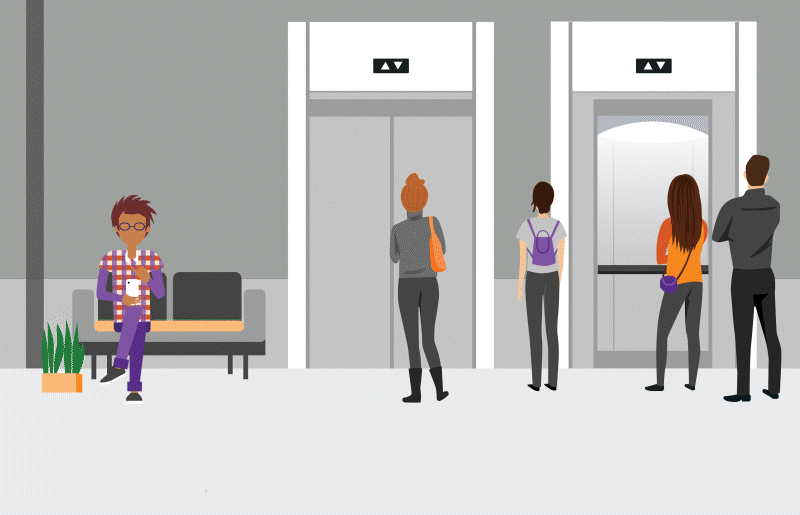
Less time waiting for the elevator = more time to spend with your kids
The technology may also herald the end of the oft-palpated up and down buttons that characterize traditional elevators. TK employs what they refer to as Agile technology not only to reduce the need to touch surfaces, but also to enhance the customer experience. “As soon as you walk into a building there’s a beacon that senses you, based on your phone or your watch, and it literally sends you a ping that says, ‘hey, are you going to the 14th. Floor?’ Then as you walk over to the elevator, it tells you to go to Elevator D, and you don’t touch anything and it takes you straight to your floor.”
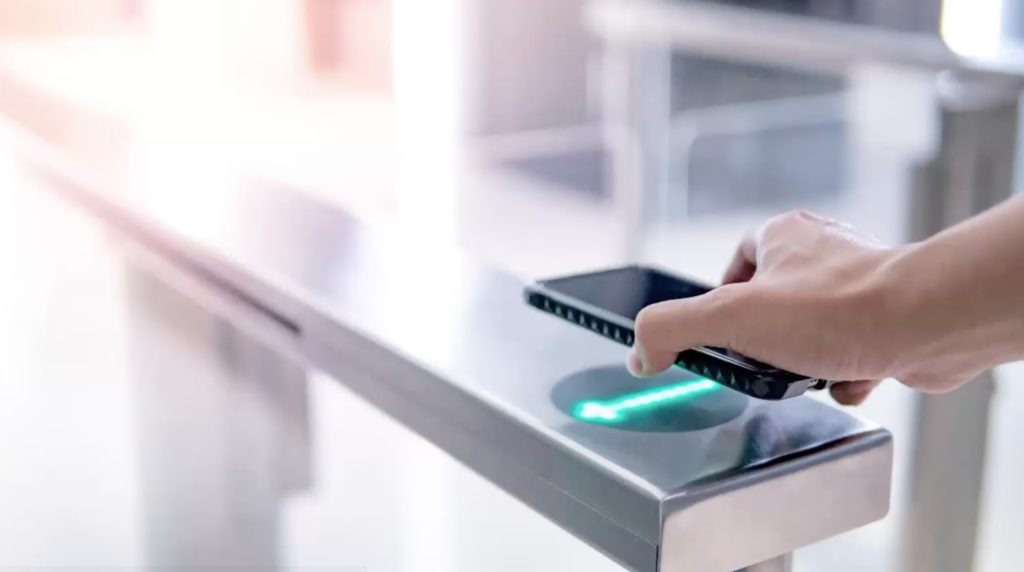
An Agile interface with touchless technology using a phone
Robots. Yes, Robots.
Touchless technology also dovetails into yet another facet of this brave new world of efficient vertical transport: robots: “They’re coming,” says Gerson, “our elevators are beginning to facilitate the movement of robots and automated delivery systems.” TK is already working with a hotel chain that’s using their elevators for—wait for it—robot room service: “Our elevators have a proximity sensor, they have an open API and method to communicate with the robot.” The elevator automatically senses the floor and transports the robot hence, ham sandwich, chips, Red Bull, or what-have-you safely ensconced and ready for the guest’s gustatory pleasure.
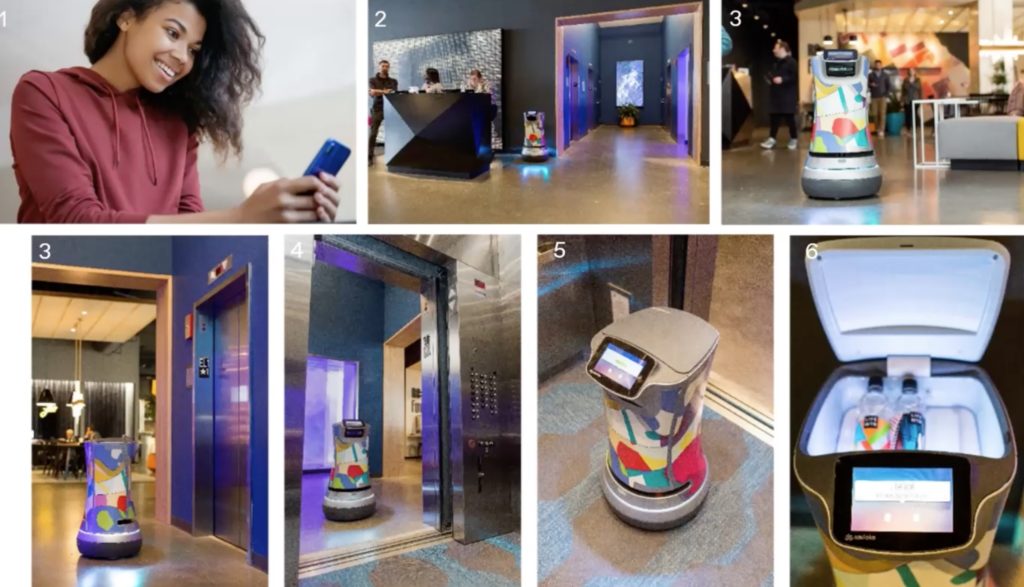
Robot room service: everybody wins
Gerson sketches out the advantages: reducing inefficient use of a (human) employee’s time and enhancing security and feelings of safety among guests: “Especially for a female guest, if I’m looking through that keyhole and I see a man standing there, I’m thinking I’m not gonna open that door… no way. But if it’s a cute little robot…” Provided, that is, the cute little robots don’t decide they no longer wish to do our bidding…
I’m being somewhat facetious, and the future Gerson describes in which robots bring groceries, deliver goods, procure take out—and work with other robots to negotiate the transition from car to curb to elevator—has implicit appeal as well as offering manifest savings in efficiency and energy use, especially now with the ongoing COVID concerns and our exponential reliance on home delivery. Says Gerson, “We’re so distracted, with all that’s going on, our driving skills are getting worse and worse, I think more and more we’re going to say let the robots take over… seriously, once automated cars are fully functional and ready, I’m in. I think there will be lots of people who are ready and willing to let robots and technology take over larger pieces of their lives.”
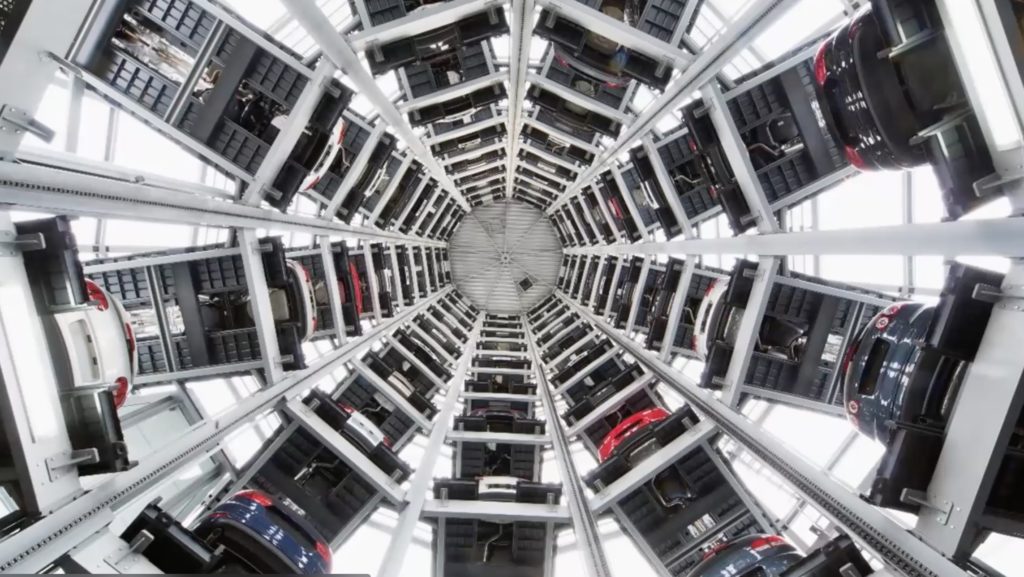
How do all these cars fit in this space? Robots. And an extremely sophisticated TK elevator.
It’s a persuasive argument, especially given that much of it is already happening, yet as I think about all the stored information on where we go, what we’re doing, and how we’re allocating our money, the scenario sends a hint of a chill up my spine. As with so much of today’s technology, there are big privacy issues herein, a Pandora’s box of ethical and philosophical questions that Gerson readily acknowledges: “Trust me… I know… right now, Jeff Bezos is listening to everything we say… there are pluses and minuses, no doubt.”
Apocalyptic doomsday robot scenarios aside, the economic calculation of increased automation is favorable. Gerson mentions that TK Elevator’s new test tower in Atlanta (grand opening scheduled for February 9) will employ a robot: “The cost of these machines is really low. It’s like $1,200 a month to rent… it’s not crazy expensive. Compare that to a person who will cost you more and may or may not show up to work. The economics of it begin to look pretty good.”
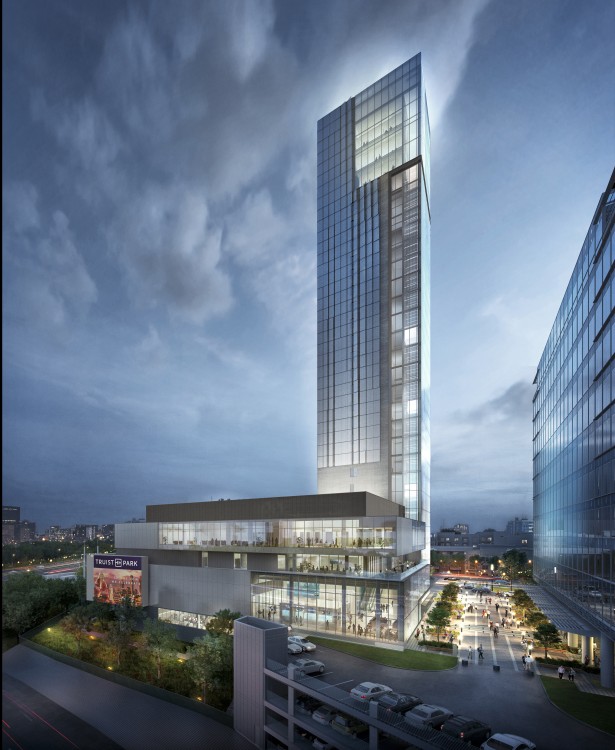
TK Elevator’s towering test center, due to open February 9. They have a robot!
Up to the Future
So what other roles will elevators play in our push to economize, enhance efficiency, and save energy? In addition to predictive analytics, TK uses another smart system to reduce maintenance costs. This topic is a biggie, way more so than most people realize, as even TK, a giant of the industry and an innovation leader, devotes huge resources to keep existing systems running smoothly—they service approximately 235,000 of the 900,000 elevators in the U.S. The company’s Cloud-Based Predictive Maintenance is another computer-based technology that monitors elevator function—sensing degrading parts, impending issues, and possible breakdowns, and dispatching service before systems fail: “The elevator is wired to a computer, we call it MAX, and we can remotely monitor that elevator, dispatch service, send a technician who already has the part, and before a single tenant knows anything’s wrong, it’s already fixed.”
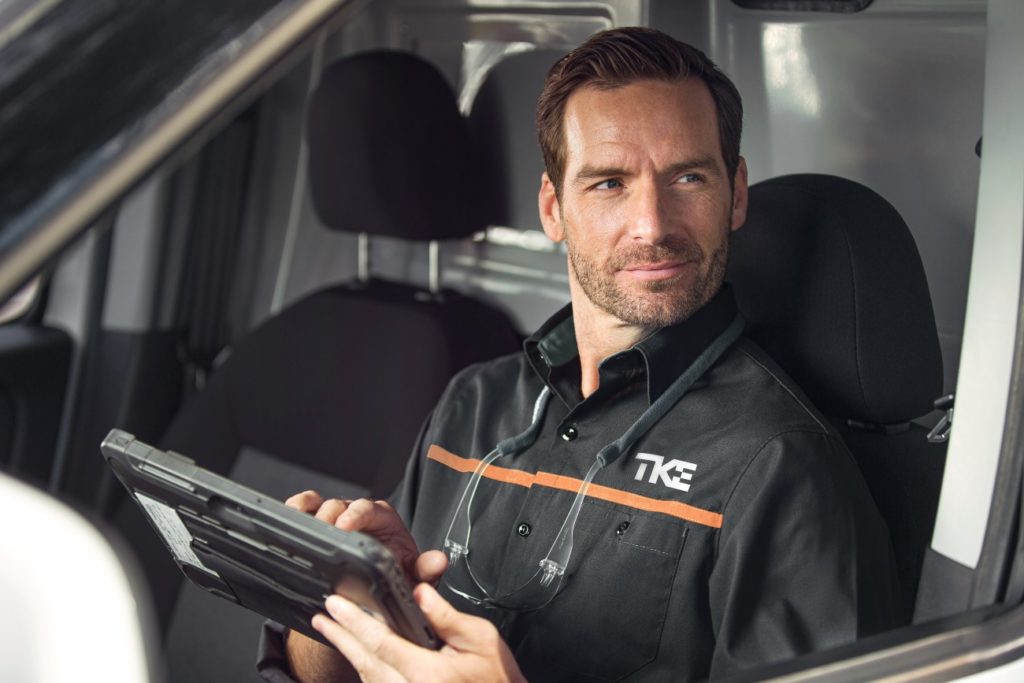
MAX promises efficient, effective maintenance. But does it assure the technician will be this good-looking?
There’s also MULTI, otherwise known as multi-directional elevator transport, a cable-less design using magnetic technology that not only moves vertically, but also horizontally. While the technology is still in development, it holds great promise for traversing not only individual buildings but also entire cities. Imagine the implications of rapid pedestrian transport from one wing of a hospital to another, for instance, or across a college campus, or through an airport. The idea is that it will move like a continuous train: “It works in super and mega-high-rise buildings, reduces waiting times on average by 15-20 seconds, and is sustainable and energy efficient. It also uses less space for shafts (50%) so returns a huge amount of usable space back to buildings and owners.”
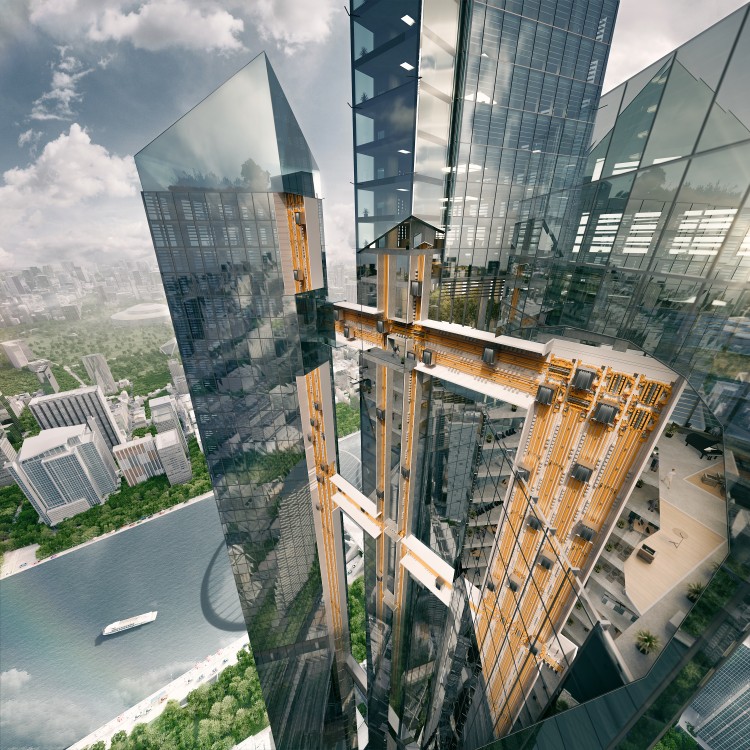
MULTI rendering (above) and in action (below), showing a behind-the-scenes view of directional exchange
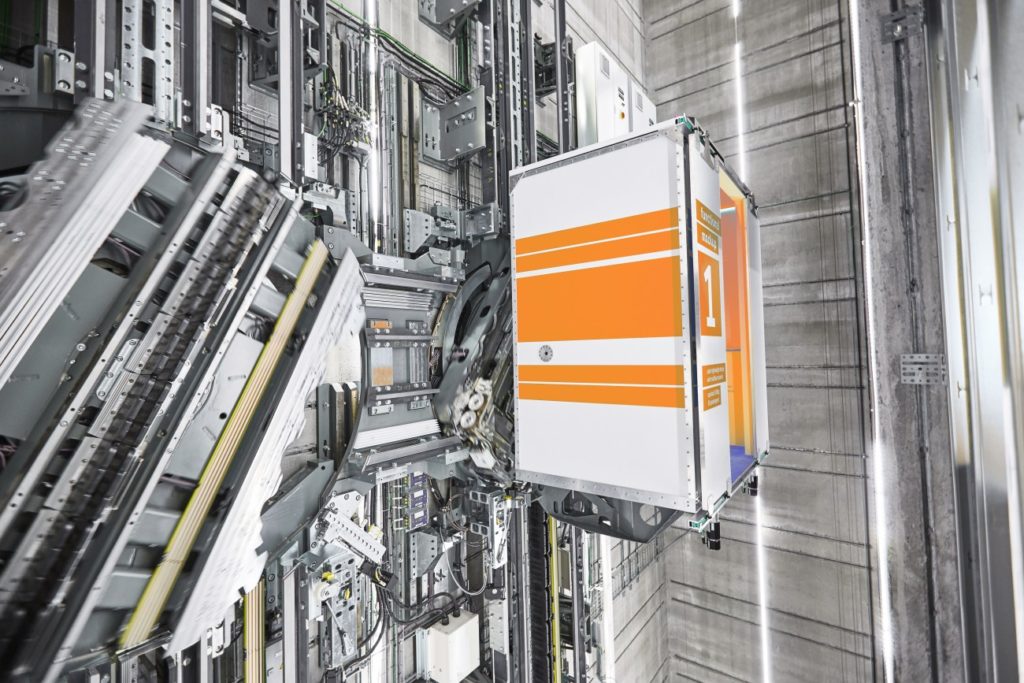
Gerson says the technology is likely a decade away from full function in the U.S. (partly owing to the slow pace of state, federal, and regulatory approval processes). We were speculating about how the technology will be fully manifest, and he said it will likely take someone with an unprecedented vision to realize it, an architect with an apprehension of its potential and the ways in which a building could be planned around it. I envision it the perfect project for Zaha Hadid, were she still with us, but perhaps her firm will pick up the mantle.

TK Elevator’s testing tower in Rottweil, Germany. Tours offered!
MULTI is but another piece in the visionary future depicted by Gerson, that of moving people and goods throughout urban spaces with supreme efficiency, safety, and convenience. TK Elevator certainly seems to be doing their part: “There are a lot of companies that can make an elevator go up and down, but we differentiate our products by offering things like Predictive Maintenance, Intelligent Dispatch, and Touchless Technology, It’s all part of enhancing the customer experience. How quickly can we get you to your destination? How pleasant is it going to be? Can we offer technologies that keep you safe, that clean the air you breathe? That keep you from having to touch buttons and capture germs? These are what a lot of our clients are asking about. How can I remotely monitor my elevator? How can I see the last time it was serviced? How do I know the traffic in my building? How do I know the floors it’s stopping at? That is really the conversation we’re having these days, and I only see that accelerating in the future.”


Leave a Reply